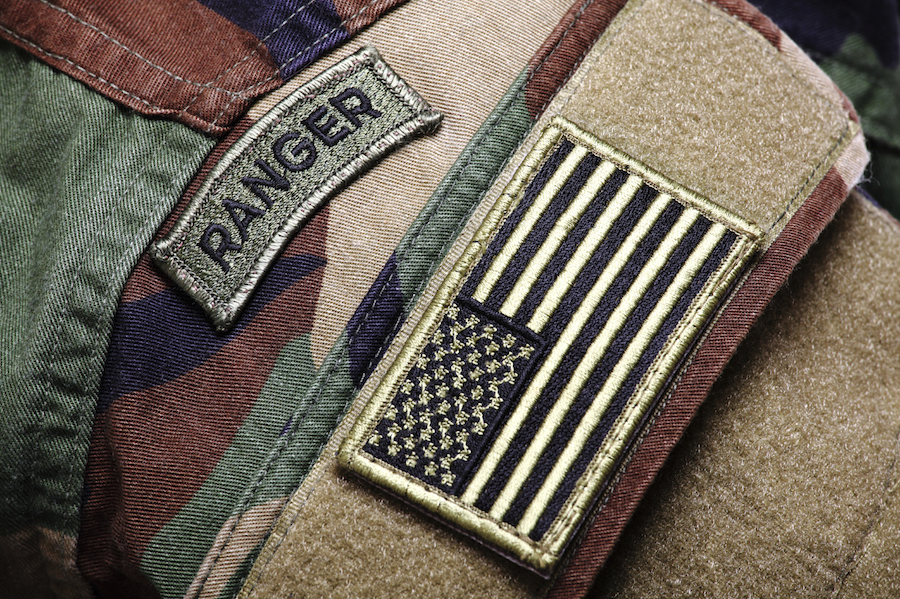It’s a testament to their devotion and drive. For the first time, two women – First Lt. Shay Haver, 25, and First Lt. Kristen Geist, 26 – broke the gender barrier and graduated from the elite Army Ranger School. This prestigious program for specialized combat was formed in 1950 during the Korean War to train soldiers in Ranger tactics. With 61+ days of extremely intense training, men and women enrolled in this combat leadership course must endure great mental and psychological stresses while coping with the physical fatigue of combat. Students train each day for about 20 hours, while consuming two or fewer meals (2,200 calories), with an average of 3.5 hours of sleep, and typically carrying 65-90 pounds. To truly appreciate the accomplishment of these first two extraordinary women and all Ranger graduates, learn about the 3 phases of Army Ranger School.
[ctt template=”8″ link=”LjoCq” via=”no” ]The 3 phases of Army Ranger School[/ctt]
3 Phases of Army Ranger School
Phase 1: Benning (In and around Camp Rogers and Camp Darby at Fort Benning, Georgia)
This is the “crawl” phase of Ranger School training, where students learn the fundamentals of squad-level mission planning. It is designed to assess a soldier’s physical stamina, mental toughness, and leadership abilities, and it develops the tactical fundamentals required for additional training. This phase is separated into two parts: the Ranger Assessment Phase and Patrolling Phase, or commonly referred to as the Darby Phase.
Ranger Assessment Phase* (Accounts for 60% of student failures)
- Push-ups: 49 minimum, 80 recommended (in 2 minutes, graded strictly for perfect form)
- Sit-ups: 59 minimum, 80 recommended (in 2 minutes)
- Chin-ups: 6 minimum, 12 recommended
- 5 mile individual run in 40 minutes minimum, 37:30 recommended
- Combat Water Survival Assessment – This test consists of three events that test the Ranger student’s ability to calmly overcome any fear of heights or water and includes a 15 meter swim wearing ACUs and boots.
- Combination Night/Day Land Navigation Test – Students are given Military Grid Reference System (MGRS) locations and begin testing before dawn. Flashlights, with red lens filters, may only be used for map referencing; the use of a flashlight to navigate terrain results in immediate dismissal.
- 12-mile march with at least a 35 pound – and on average 47 pound – rucksack*a sample of requirements but not a complete list
Darby Phase
This phase includes fast-paced instruction on troop-leading procedures, the principles of patrolling, demolitions, field craft, and basic battle drills such as squad ambush and reactions to contact. Students who are airborne qualified participate in a parachute jump.
Before continuing on to the next phase, each student must demonstrate the ability to plan, prepare for, resource, and execute a combat patrol as a squad leader or team leader. Students must also receive positive peer evaluations and not accrue more than three negative spot reports. Those that are successful receive an eight hour pass to refit their gear and then move to the mountains of North Georgia.
Phase 2: Mountain (At Camp Merrill in remote mountains near Dahlonega, Georgia)
The Mountain Phase of Ranger School teaches students to operate in small units while sustaining themselves and their subordinates in adverse mountain conditions. They receive instruction on military mountaineering tasks, mobility training, as well as techniques for employing a platoon for continuous combat patrol operations in a mountainous environment. The stamina and commitment of the Ranger student is stressed to the maximum. At any time, he or she may be selected to lead tired, hungry, physically expended students to accomplish yet another combat patrol mission.
Phase 3: Swamp (Various locations near Camp Rudder, Eglin Air Force Base, Florida)
This phase tests the patrolling and leadership techniques of every Ranger. Students receive technique training that assists them in accomplishing the tactical missions. Technique training includes: small boat operations, expedient stream crossing techniques, and skills needed to survive and operate in a rainforest/swamp environment.
To complete Army Ranger School training a soldier must overcome insurmountable challenges under simulated battle conditions. The extreme physical intensity of this program combined with the lack of sleep while consuming minimal calories causes many students to lose 20-30 pounds. Completing this training is a true testament to a soldier’s drive and determination. When this outstanding accomplishment is achieved, a graduate can proudly wear and display the well-deserved Ranger Tab.
The Ranger Hall of Fame (RHOF) was formed to honor and preserve the spirit and contributions of America’s most extraordinary Rangers. Learn more about recent RHOF inductees and view a complete list of all members.










